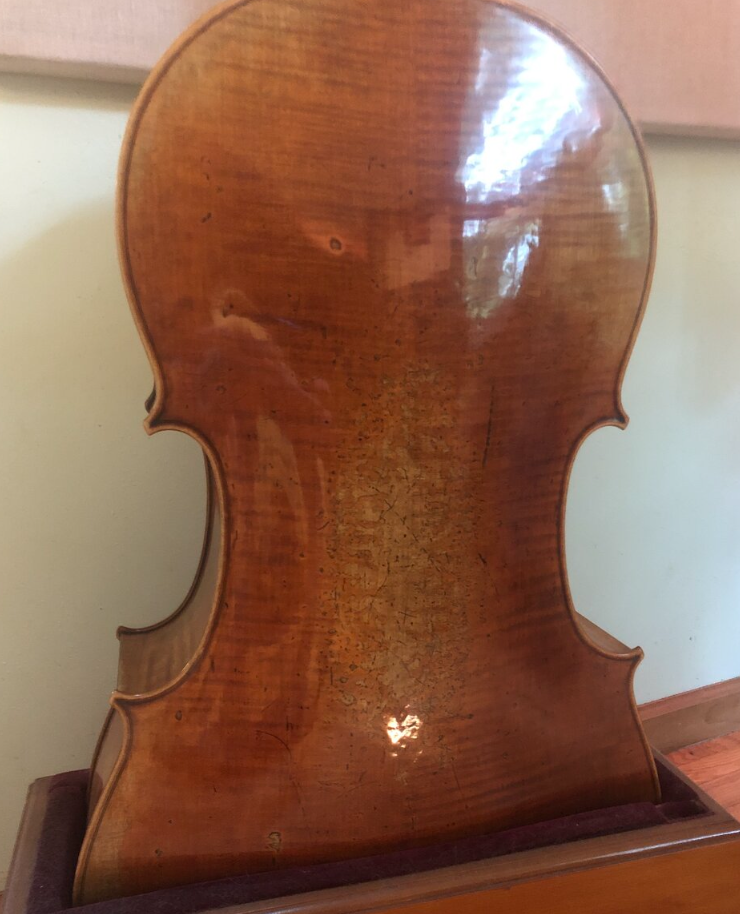The Cello is All Together
First of all, a massive thank you to my donors. It is looking like things will be opening up more as the year progresses and I’m hopeful that the Madison Symphony will return to the stage on schedule and that I will be able to play my new cello in Overture Hall by the end of 2021. I’m so looking forward to that and to playing chamber music and recitals with it in 2022 and beyond. If you’re interested in supporting my purchase of this cello, please click on the link to donate! Read on below for new pictures and an update on the progress of the cello
The cello is done “in the white,” which means the varnishing will begin soon. While the cello may appear to be close to the end, the process of varnishing a cello takes several months and it will need to be sunned for a little bit before that can even begin. I was told that this is the old way of doing things and that these days many shops will use drying boxes instead of sunlight. As a person who likes natural things, I am glad to see the cello sunning on Michele’s porch instead of being heated by human-made means. There is no light bulb greater than the sun, after all.
I admit I do not know much about the process of varnishing a cello, but from my own experience varnishing various woodworking pieces in my own home, and from the many youtube videos I have watched on violin making, I know that this is a complicated, multistage process. Here’s an interesting article by British Luthier Robin Aitchison all about Cello Varnish. Luthiers do not all order premade varnish. As I understand it, most serious luthiers each make their own varnish. This is a skill like any other that is honed over a lifetime of research and practice and each maker arrives at a different aesthetic and practical end.
In the great debate about what made Stradivari and the early Italian makers so successful, it was posited that the varnish was the secret to the sound of the old masters. This may be reductionist and perhaps very difficult to prove, since the varnish is just one of so many ingredients that blend to make a wonderful sounding instrument, but in Aitchison’s article he addresses how recipes have changed over time.
If you go to a high end violin shop, or even sit close to the stage at a symphony orchestra concert, you can see the varied colors, textures and transparencies of each instrument’s varnish. The varnish on an instrument contains a bit of its history, not only in the sense that the varnish was made during a particular time when particular knowledge and skill may have been available, but also in the sense that the wear on the varnish of an instrument can describe the behavior of the player. The points of wear over time, evidence of aggressive playing, perhaps even evidence of not having been played at all.
An excellent 2020 Wiliiam Whedbee cello I had the opportunity to break in this year
The cello I am currently playing on has a soft, mirror-like varnish and antiquing which replicates tool markings and wear on the varnish that might take place over centuries of use. It was made in 2021 by David Folland (Update: It is now owned by a former student)
My Terry cello had a very matted and even varnish with virtually no antiquing. Over time I wore away varnish on the left side of the cello by resting my hand just to the left of the neck. Other than that there was virtually no wear to the varnish. See below for some examples of Instrument varnish variations.
I happen to have played on several of Michele’s instruments, so I have a rough idea of her varnishing style, but it is unknown how the varnish will transform this particular wood and that’s an exciting mystery.



